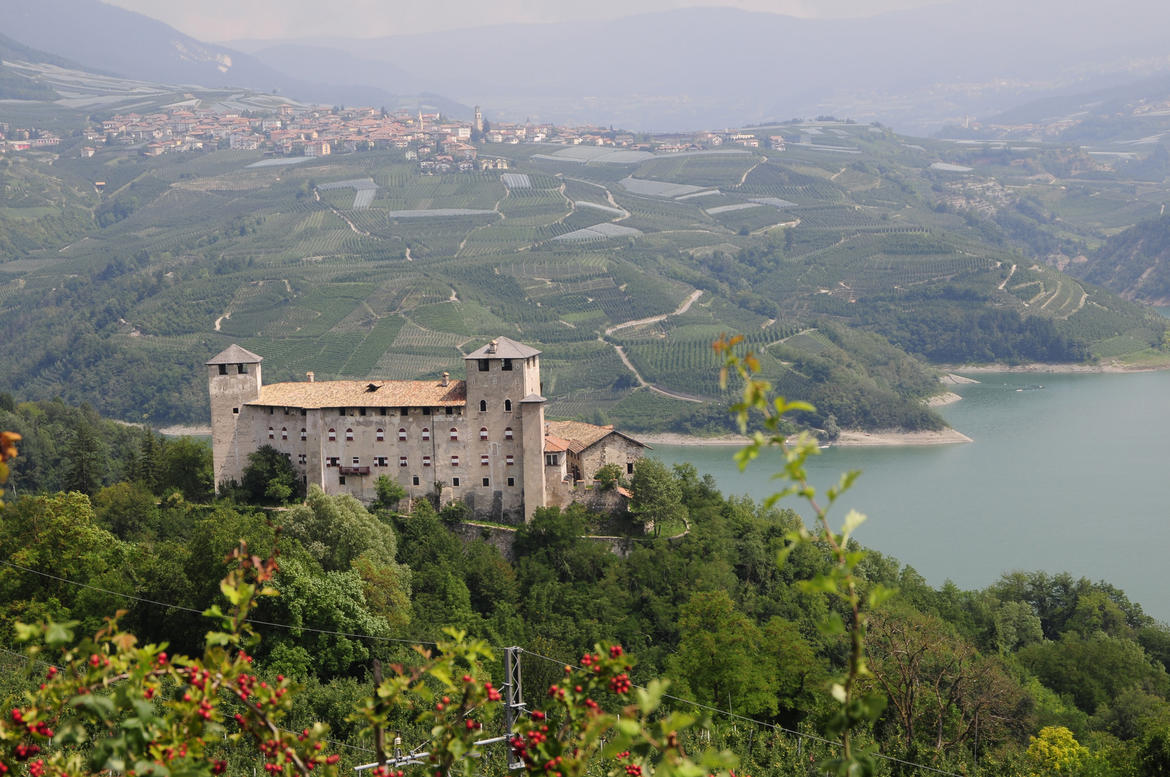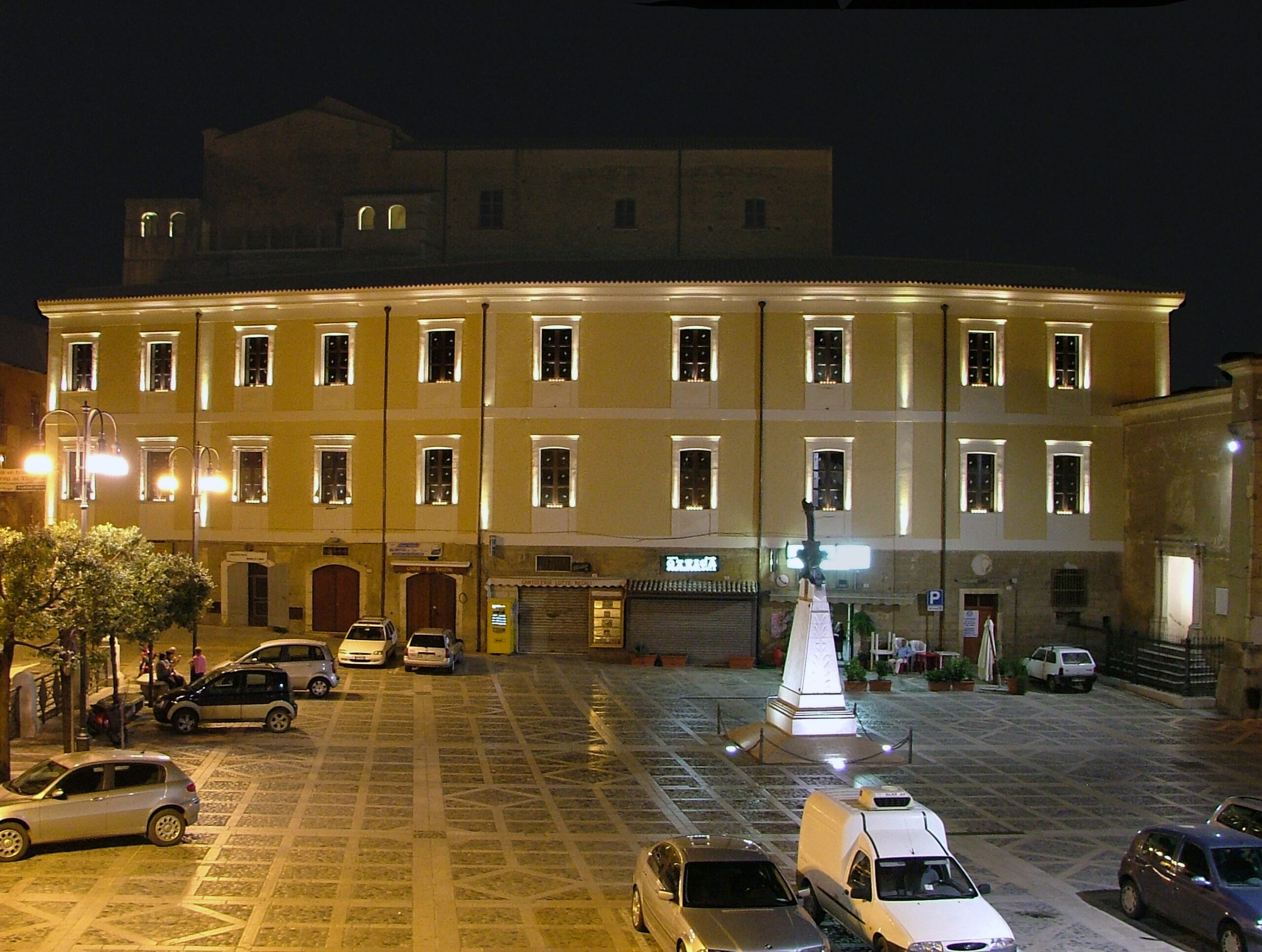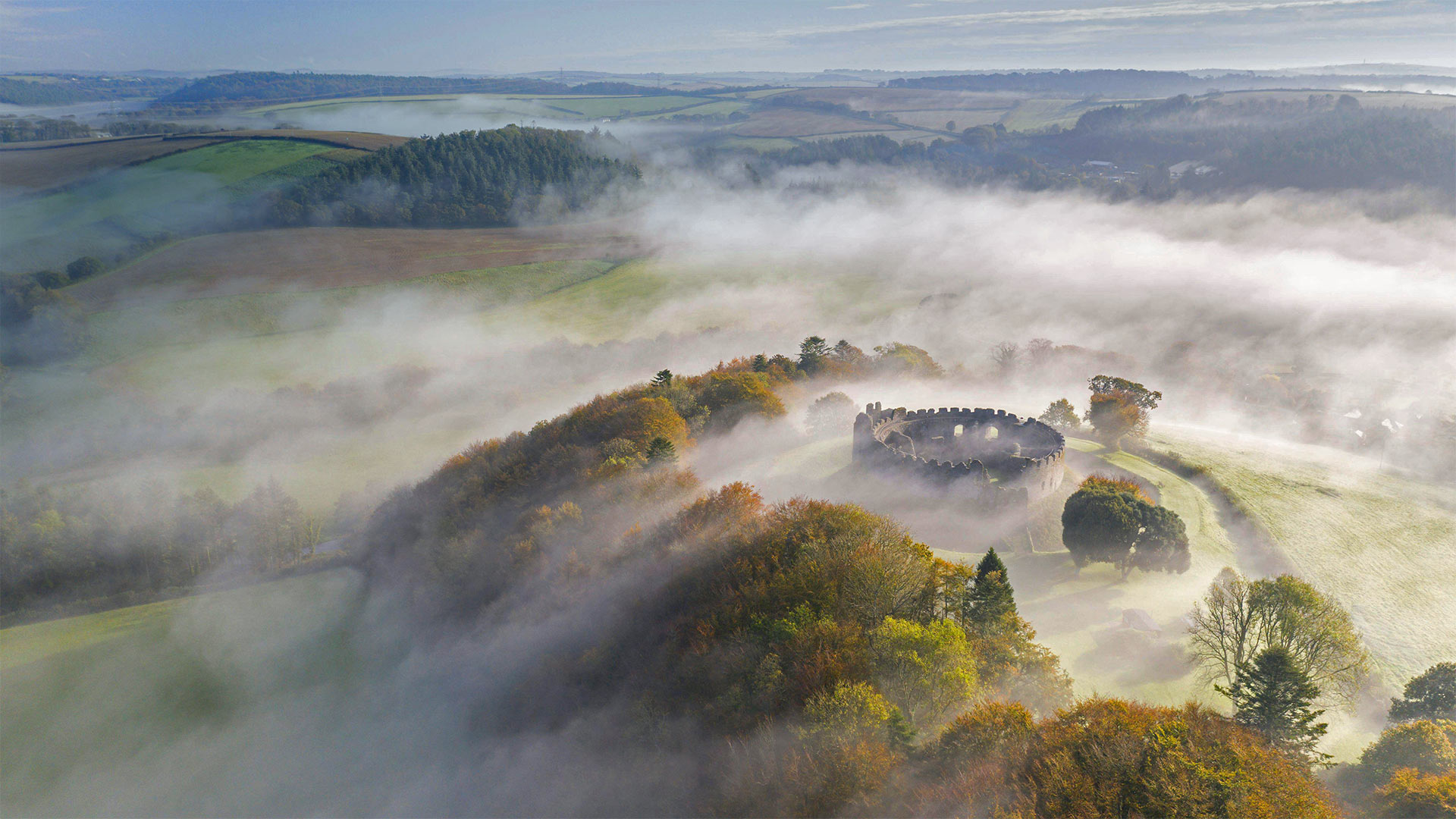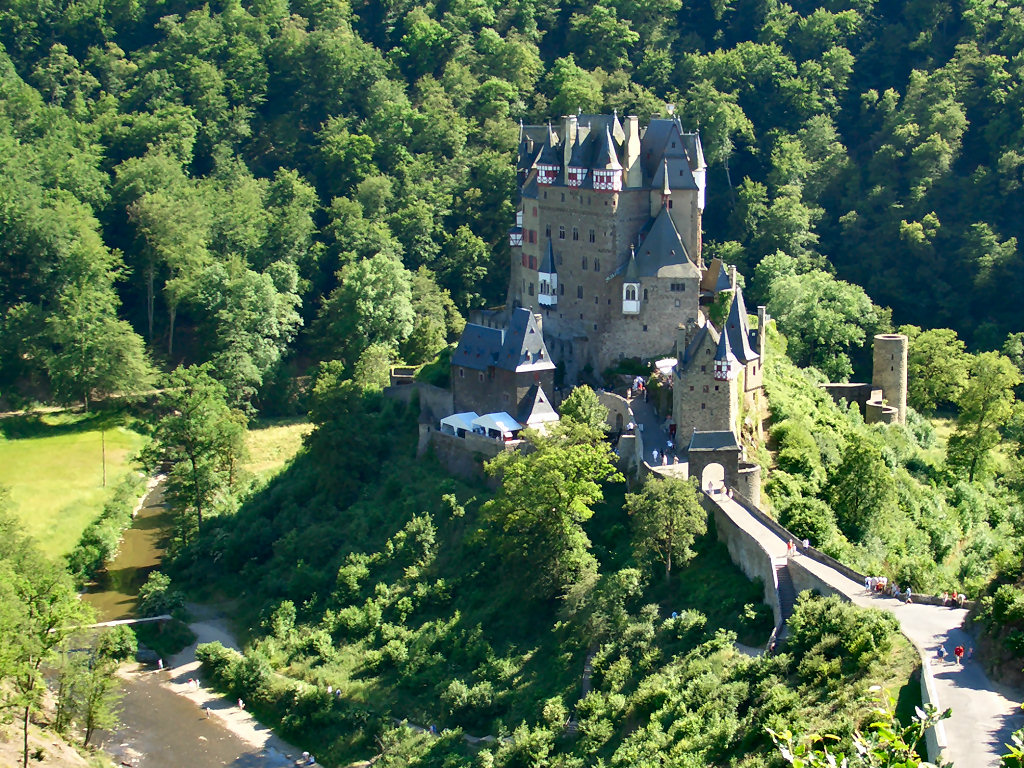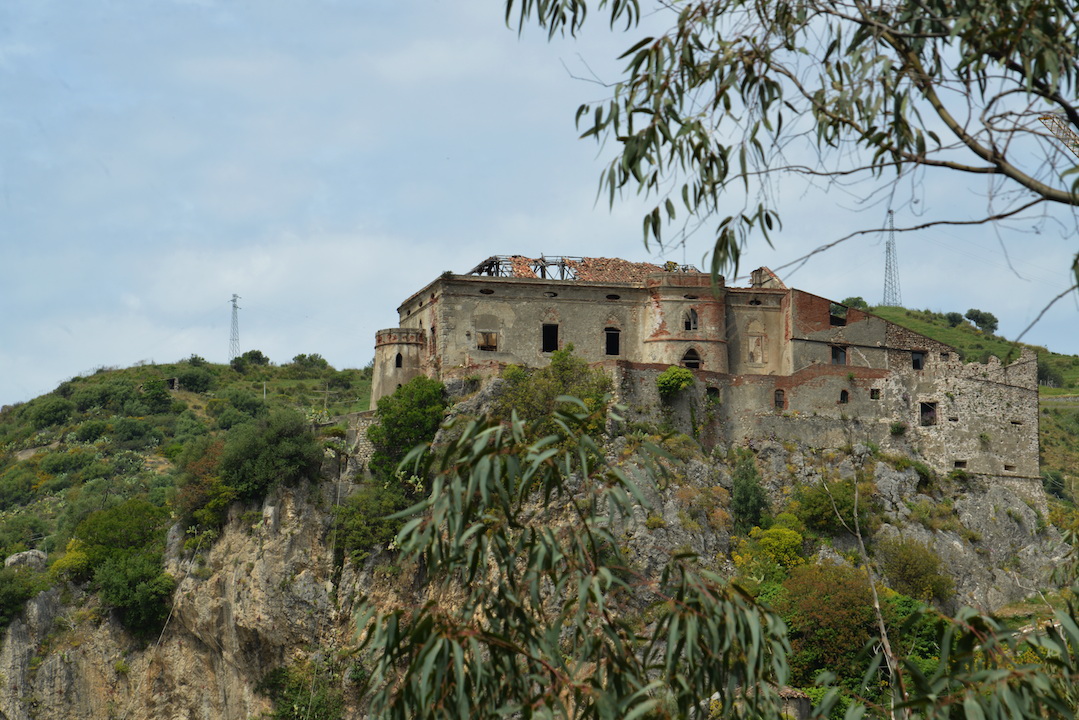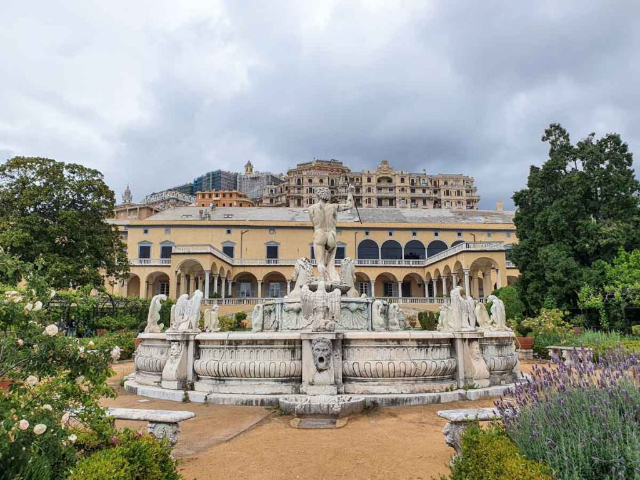On an isolated hill surrounded by apple orchards, on the shore of the waters of Lake St. Justina, a few meters from the capital of the valley, stands the majestic Castel Cles. The first evidence of its history dates back to the 12th century. The most illustrious member of the Cles family, Prince-Bishop Bernardo Clesio, was responsible for the enrichment and development of the building in the Renaissance style. Over the centuries, Cles Castle was hit by numerous disasters that seriously damaged it: the Peasants’ Revolt in the 16th century and the fire of 1825 that destroyed part of the decorations on the second floor and forced the Barons of Cles to knock down one of the three towers that enclosed the entire complex.
The original nucleus consisted of the ancient tower: according to the typical system of medieval fortifications in Trentino, the residential buildings overlooked the inner courtyard and were surrounded by a second set of walls. On the whole, the complex was enclosed by three towers: today only two remain to mark the boundary of the residential area. The frescoed bands with allegorical scenes and heraldic motifs on the façade are punctuated by arches, architraved windows and arched embrasures that have a decorative effect. The interiors of the castle are particularly precious; the rooms are decorated with 16th century frescoes representing heraldic motifs and allegorical scenes attributed to the artist Marcello Fogolino; the central hall, the Hall of Ovid’s Metamorphoses, is instead embellished with an elegant coffered ceiling.
